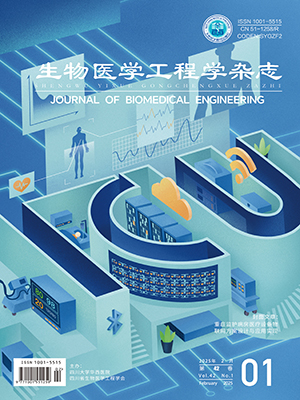| 1. |
Huang J, Li X, Shi X, et al. Platelet integrin αIIbβ3: signal transduction, regulation, and its therapeutic targeting. J Hematol Oncol, 2019, 12(1): 1-22.
|
| 2. |
Bachmann M, Kukkurainen S, Hytonen V P, et al. Cell adhesion by integrins. Physiol Rev, 2019, 99(4): 1655-1699.
|
| 3. |
Nieswandt B, Moser M, Pleines I, et al. Loss of talin1 in platelets abrogates integrin activation, platelet aggregation, and thrombus formation in vitro and in vivo. J Exp Med, 2007, 204(13): 3113-3118.
|
| 4. |
Wegener K L, Partridge A W, Han J, et al. Structural basis of integrin activation by talin. Cell, 2007, 128(1): 171-182.
|
| 5. |
Dedden D, Schumacher S, Kelley C F, et al. The architecture of talin1 reveals an autoinhibition mechanism. Cell, 2019, 179(1): 120-131. e113.
|
| 6. |
Bromberger T, Zhu L, Klapproth S, et al. Rap1 and membrane lipids cooperatively recruit talin to trigger integrin activation. J Cell Sci, 2019, 132(21): jcs235531.
|
| 7. |
Bromberger T, Klapproth S, Rohwedder I, et al. Direct Rap1/Talin1 interaction regulates platelet and neutrophil integrin activity in mice. Blood, 2018, 132(26): 2754-2762.
|
| 8. |
Zhu L, Yang J, Bromberger T, et al. Structure of Rap1b bound to talin reveals a pathway for triggering integrin activation. Nat Commun, 2017, 8(1): 1-12.
|
| 9. |
Camp D, Haage A, Solianova V, et al. Direct binding of Talin to Rap1 is required for cell-ECM adhesion in Drosophila. J Cell Sci, 2018, 131(24): jcs225144.
|
| 10. |
Gingras A R, Lagarrigue F, Cuevas M N, et al. Rap1 binding and a lipid-dependent helix in talin F1 domain promote integrin activation in tandem. J Cell Biol, 2019, 218(6): 1799-1809.
|
| 11. |
Austen K, Ringer P, Mehlich A, et al. Extracellular rigidity sensing by talin isoform-specific mechanical linkages. Nat Cell Biol, 2015, 17(12): 1597-1606.
|
| 12. |
Kumar A, Ouyang M, Van den Dries K, et al. Talin tension sensor reveals novel features of focal adhesion force transmission and mechanosensitivity. J Cell Biol, 2016, 213(3): 371-383.
|
| 13. |
Goult B T, Brown N H, Schwartz M A. Talin in mechanotransduction and mechanomemory at a glance. J Cell Sci, 2021, 134(20): jcs258749.
|
| 14. |
Chakraborty S, Banerjee S, Raina M, et al. Force-directed “Mechanointeractome” of talin–integrin. Biochemistry, 2019, 58(47): 4677-4695.
|
| 15. |
Su S, Ling Y, Fang Y, et al. Force-enhanced biophysical connectivity of platelet β3 integrin signaling through Talin is predicted by steered molecular dynamics simulations. Sci Rep, 2022, 12: 4605.
|
| 16. |
Owen L M, Bax N A, Weis W I, et al. The C-terminal actin-binding domain of talin forms an asymmetric catch bond with F-actin. Proc Natl Acad Sci U S A, 2022, 119(10): e2109329119.
|
| 17. |
Yao M, Goult B T, Chen H, et al. Mechanical activation of vinculin binding to talin locks talin in an unfolded conformation. Sci Rep, 2014, 4: 4610.
|
| 18. |
Gingras A R, Bate N, Goult B T, et al. The structure of the C-terminal actin-binding domain of talin. EMBO J, 2008, 27(2): 458-469.
|
| 19. |
Srivastava J, Barreiro G, Groscurth S, et al. Structural model and functional significance of pH-dependent talin-actin binding for focal adhesion remodeling. Proc Natl Acad Sci U S A, 2008, 105(38): 14436-14441.
|
| 20. |
Anthis N J, Wegener K L, Critchley D R, et al. Structural diversity in integrin/talin interactions. Structure, 2010, 18(12): 1654-1666.
|
| 21. |
Humphrey W, Dalke A, Schulten K. VMD: visual molecular dynamics. J Mol Graph, 1996, 14(1): 33-38.
|
| 22. |
Phillips J C, Braun R, Wang W, et al. Scalable molecular dynamics with NAMD. J Comput Chem, 2005, 26(16): 1781-1802.
|
| 23. |
Brooks B R, Brooks III C L, Mackerell Jr A D, et al. CHARMM: the biomolecular simulation program. J Comput Chem, 2009, 30(10): 1545-1614.
|
| 24. |
李雨峰, 方颖, 吴建华. 利用分子动力学模拟探究力学信号对 CD44/FERM 复合物结构的影响. 生物医学工程学杂志, 2018, 35(4): 501-508.
|
| 25. |
谢旭斌, 刘文平, 吴建华, 等. 采用分子动力学模拟方法探究Ca2+对VWF-A2结构域稳定性的影响. 医用生物力学, 2018, 33(3): 248-254.
|
| 26. |
李圆圆, 宁志龙, 吴建华, 等. A3/A1复合物对接及结构域之间相互作用的分子动力学研究. 医用生物力学, 2020, 35(2): 195-201, 215.
|
| 27. |
Liao Z, Gingras A R, Lagarrigue F, et al. Optogenetics-based localization of talin to the plasma membrane promotes activation of β3 integrins. J Biol Chem, 2021, 296: 100675.
|
| 28. |
Goult B T, Bouaouina M, Elliott P R, et al. Structure of a double ubiquitin-like domain in the talin head: a role in integrin activation. EMBO J, 2010, 29(6): 1069-1080.
|
| 29. |
Chen W, Lou J, Zhu C. Forcing switch from short-to intermediate-and long-lived states of the αA domain generates LFA-1/ICAM-1 catch bonds. J Biol Chem, 2010, 285(46): 35967-35978.
|
| 30. |
Zhang Y, Lin Z, Fang Y, et al. Prediction of catch-slip bond transition of kindlin2/β3 integrin via steered molecular dynamics simulation. J Chem Inf Model, 2020, 60(10): 5132-5141.
|




